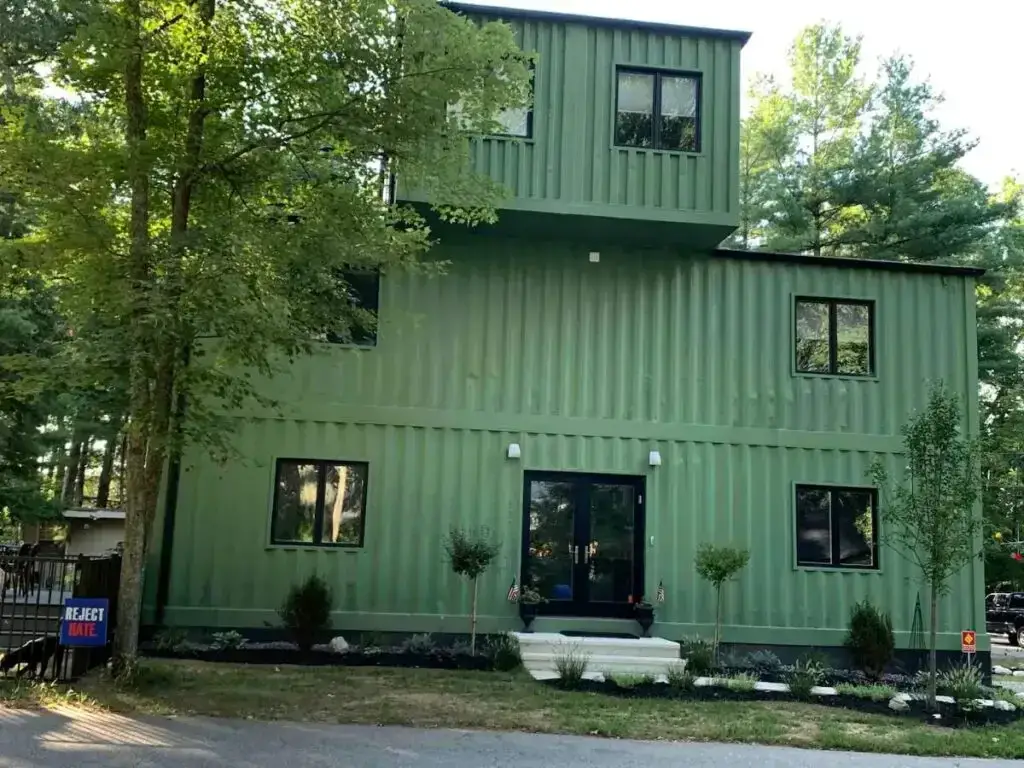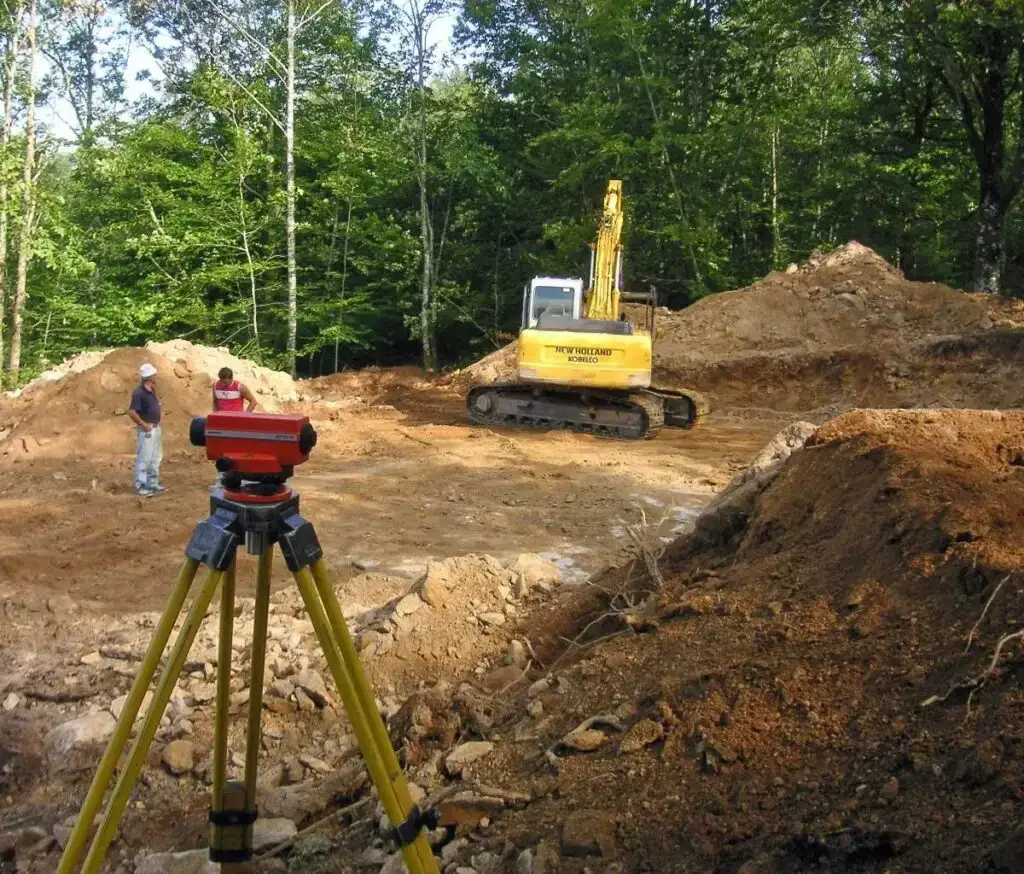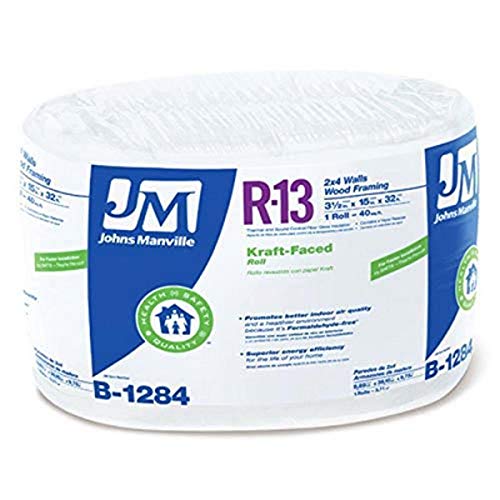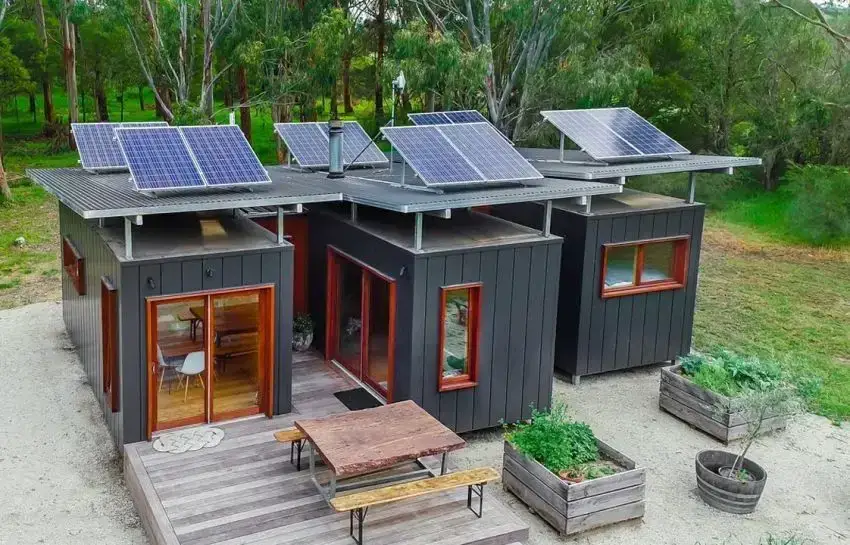The idea of constructing a shipping container home in Connecticut has gained popularity in recent years due to its unique and sustainable nature. This guide will provide you with an overview of how you can turn a shipping container into a stunning and eco-friendly residence in the beautiful state of Connecticut.
The Benefits and Challenges of Shipping Container Home Construction
Building a shipping container home brings numerous benefits. First and foremost, it is a highly sustainable approach as it repurposes used shipping containers, reducing waste and saving energy.
Additionally, these homes can be built at a fraction of the cost compared to traditional construction methods. They are also highly customizable, allowing you to create a unique living space.
However, it’s important to note that there are challenges associated with this type of construction. Proper insulation, ventilation, and dealing with any zoning regulations are some key considerations. This guide will provide you with valuable insights to overcome these challenges and successfully bring your shipping container home to life.
Table of Contents
Understanding Shipping Containers

Shipping containers have become an innovative solution for housing construction projects in Connecticut. These sturdy rectangular steel boxes are not only cost-effective, but also offer flexibility in terms of design and construction. Let’s delve deeper into the world of shipping containers and explore their suitability for your home building project.
Read More on Shipping Container Home VS Prefab Home: Do the Right Thing
Introduction to Shipping Containers
Shipping containers are originally designed for international freight transportation. They are built to withstand harsh conditions at sea, making them incredibly durable and weather-resistant. This makes them an ideal choice for constructing homes that can withstand Connecticut’s challenging climate.
Different Container Sizes and Conditions
When it comes to shipping containers, you have various sizes to choose from, including 20-foot and 40-foot options. It’s important to consider the size of your project and the space you require before selecting a container.
Additionally, you can opt for either new or used containers. New containers offer a pristine condition and often have fewer structural issues, while used containers can be a more budget-friendly option.
Read More on Shipping Container Home in New Hampshire – The Perfect Location
Key Considerations when Selecting Shipping Containers
Before proceeding with the purchase of shipping containers, there are a few essential factors to consider. Firstly, inspect the containers thoroughly for any signs of damage or corrosion. You should also check for the presence of hazardous materials that may have been stored in the containers previously.
Furthermore, consider the transportation logistics of delivering the containers to your building site. Ensure that there is enough space for a truck to maneuver and unload the containers safely.
Lastly, think about the aesthetics of your container home. Consider whether you would like to retain the original appearance of the containers or if you would prefer to modify them extensively to match your desired architectural style.
Zoning and Permitting Regulations in Connecticut

When embarking on the journey of building a shipping container home in Connecticut, it is crucial to understand the importance of local zoning regulations and obtaining the necessary permits. Failure to comply with these regulations can result in delays, fines, and even the inability to complete your project.
Connecticut has specific building codes, permits, and regulations that are unique to the state. Familiarizing yourself with these requirements can help ensure a smoother process and avoid unnecessary setbacks. It is recommended to consult the local zoning office or a professional familiar with Connecticut’s regulations to guide you through the process.
Navigating the zoning and permitting process can present its challenges, but with the right knowledge and preparation, you can overcome them. Here are some tips:
- Research: Begin by researching the zoning regulations in the specific area where you plan to build your container home. Be aware of setback requirements, maximum height restrictions, and any other regulations that may impact your project.
- Permit Applications: Obtain and carefully fill out the necessary permit applications required by your local jurisdiction. Be sure to include all required documentation and pay any associated fees.
- Engage with the Local Community: It can be beneficial to involve and inform your neighbors and local community members about your container home project. This can help foster positive relationships and minimize potential objections or challenges.
- Professional Assistance: Consider working with an architect, engineer, or contractor who is experienced in container home construction in Connecticut. They can help navigate the permitting process and ensure your design meets all requirements.
By diligently following the zoning and permitting regulations in Connecticut, you can successfully build your shipping container home while avoiding unnecessary complications.
Remember, compliance with these regulations not only protects your investment but also ensures the safety and well-being of both you and your future neighbors.
- Completely revised 9th Edition of Code Check.
- Easy-to-use guide to building codes for a safe and sound home.
- Shows you how to build a safe, sound house without a professional inspector.
- Incorporates the most current building codes from the International Residential Code (IRC).
- Provides hundreds of illustrations in full-color.
- Details the correct installation of critical items.
- Answers common building code questions from today’s do-it-yourselfer.
Site Preparation for Container Home Construction

Before embarking on the construction of your shipping container home in Connecticut, proper site preparation is essential. This crucial step ensures a smooth and efficient construction process, allowing you to bring your container home vision to life.
Importance of Proper Site Preparation
Proper site preparation sets the foundation for a successful container home construction project. By preparing your site adequately, you minimize potential setbacks and ensure a safe, structurally sound end result.
Clearing the Land and Leveling the Site
The first step in preparing your site is to clear the land and level it for container placement. This involves removing any vegetation, rocks, or debris that may obstruct the construction process. Leveling the site ensures that your containers will be aligned correctly and provides a stable base for your home.
Ensuring Availability of Utilities
Another critical aspect of site preparation is ensuring the availability of utilities such as water, electricity, and sewage connections. Before construction begins, it is crucial to contact the necessary utility providers to confirm the availability and feasibility of these connections. This step is essential for the functionality and livability of your container home.
By taking the time to properly prepare your site, you set the stage for a successful container home construction project in Connecticut. With a cleared and leveled site and the availability of essential utilities, you can now proceed to the exciting next step: designing the layout and choosing construction techniques for your container home.
Read More on What is Site Inspection? All You Need to Know
Designing the Layout and Construction Techniques

Designing the layout and construction techniques for your shipping container home in Connecticut requires careful planning and consideration.
By selecting a suitable location, optimizing space and functionality, and using proper construction techniques, you can create a one-of-a-kind container home that fits your needs and desires.
Choosing a Suitable Location for the Container Home in Connecticut
When choosing a location for your container home, it’s essential to consider zoning and permitting regulations (discussed in section 3) as well as your personal preferences and needs. Connecticut offers many possibilities, from urban environments to more rural settings with scenic views.
Consider factors such as proximity to amenities, accessibility, and the overall environment. Ensure that the selected location aligns with your goals and provides suitable space for your container home project.
Read More on The Importance of Site Surveys in Construction: Expert Advice
Design Considerations for Optimizing Space and Functionality
Container homes present unique challenges in terms of space optimization. To make the most of your container home’s layout, carefully consider the functional requirements and potential limitations of shipping containers.
Explore creative ways to increase usable space, such as utilizing vertical space, considering storage solutions, and incorporating multi-purpose furniture. By thinking strategically about the layout and finding innovative design solutions, you can maximize the functionality of your container home.
Overview of Proper Construction Techniques for Container Modification
Proper construction techniques are crucial for the successful modification of shipping containers into homes. When taking on such a project, it is advisable to consult with professionals familiar with container home construction techniques.
Some key considerations include ensuring structural integrity, proper insulation and ventilation, and proper installation of doors and windows. Expert knowledge will guide you in dealing with potential challenges and help you achieve a safe, durable, and comfortable container home.
By carefully designing the layout and employing proper construction techniques, you can transform a shipping container into a unique and functional home in Connecticut.
Read More on Shipping Container Home in NSW: A Cost-Effective Living
Container Selection and Modification
When it comes to building a shipping container home in Connecticut, choosing the right containers and modifying them to suit your needs is crucial. Here are some key factors to consider during the container selection and modification process:
Factors to Consider When Selecting Suitable Shipping Containers
- Size: Determine the size and number of containers needed to accommodate your desired layout and living spaces.
- Condition: Inspect containers for any signs of damage, rust, or structural issues that may affect their durability.
- Material: Opt for containers made of Corten steel, a high-quality material known for its strength and resistance to corrosion.
- Delivery: Ensure the containers can be delivered to your construction site and placed securely.
How to Assess Container Condition and Structural Integrity
Before starting the modification process, it’s important to thoroughly inspect the containers for any potential issues.
Look for signs of rust, dents, or other damage that can compromise the structural integrity. Hiring a professional inspection service can provide a detailed assessment and help you make informed decisions.
Addressing Container Modification Topics
When modifying the containers, there are several important topics to consider:
- Insulation: Proper insulation is essential for maintaining comfortable temperatures inside the container home. Choose insulation materials that are suitable for the local climate.
- Ventilation: Ensure adequate airflow by installing vents or windows to prevent condensation and promote air circulation.
- Framing: Adding a wooden framing system inside the container can provide structural support and make it easier to install walls, windows, and doors.
- Cutting openings: Determine the location and size of openings for windows, doors, and other necessary access points. Properly reinforce the container during the cutting process to maintain its integrity.
By addressing these modification topics, you can enhance the functionality and comfort of your shipping container home in Connecticut. It’s crucial to consult with professionals and adhere to the relevant building codes and regulations throughout the process.
| Image | Product Title | Features | Price |
|---|---|---|---|
 | Buy on Amazon | ||
 | Buy on Amazon | ||
 | Buy on Amazon |
Read More on How to Build A Storm Shelter Out Of A Shipping Container
Foundation and Structural Considerations
Building a strong and stable foundation for the container home is crucial to ensure the structural integrity of your project. Here are some important considerations to keep in mind:
Discussion on Different Types of Foundations Suitable for Container Construction
When it comes to container construction, there are several types of foundations that can be suitable. The choice depends on factors such as soil conditions, local regulations, and budget. Some common options include:
- Concrete Slab Foundation: This is a popular choice as it provides a solid and level base for the containers. It involves pouring a concrete slab on which the containers can be placed.
- Pier Foundation: This involves using concrete or steel piers to support the weight of the containers. It is ideal for sites with uneven or sloping terrain.
- Strip Footing Foundation: This type of foundation involves digging a shallow trench and pouring concrete footings to support the containers. It is suitable for areas with stable soil conditions.
Anchoring Techniques and Structural Reinforcement for Container Stacking and Load Distribution
Proper anchoring techniques are essential to ensure that the containers stay in place, especially in areas prone to high winds or seismic activity. Additionally, structural reinforcement may be required to handle the weight of stacked containers. Some techniques and considerations include:
- Anchor Bolts or Tie-Downs: These are used to secure the containers to the foundation and prevent movement. They should be installed at key locations along the length and width of the container.
- Structural Steel Framing: Adding steel framing or bracing inside the containers can increase their strength and stability.
- Distribution of Load: Proper load distribution is essential when stacking containers. Supporting columns or beams can be used to distribute the weight evenly.
By carefully considering these foundation and structural factors, you can ensure a solid and durable container home that stands the test of time.
Read More on Shipping Container Anchors: 10 Of The Best Anchors!
Systems and Utilities Integration
Integrating necessary systems and utilities is crucial when building a shipping container home in Connecticut. Not only does it ensure the comfort and functionality of the living space, but it also complies with safety regulations.
Importance of Integrating Systems and Utilities
Integrating systems and utilities within a container home is essential for a seamless living experience. Plumbing, electrical wiring, HVAC systems, and sustainable energy options are all important aspects to consider during the construction process.
Plumbing, Electrical Wiring, HVAC Systems, and Sustainable Energy in Connecticut Container Homes
When it comes to plumbing, it is essential to plan the layout and choose high-quality fixtures to ensure efficient water usage. Proper electrical wiring is crucial for powering appliances, lighting, and other electrical equipment within the container home.
HVAC systems play a significant role in maintaining a comfortable temperature throughout the year, and exploring sustainable energy options, such as solar panels, can reduce the home’s carbon footprint.
Tips for Achieving Comfort and Functionality in Your Container Home in Connecticut
As you integrate systems and utilities within your container home, here are some tips to achieve both comfort and functionality:
- Ensure proper insulation to maintain a comfortable temperature.
- Plan the layout carefully to optimize space and create functional areas.
- Consider smart home systems that provide convenience and control over various aspects of the home.
- Invest in energy-efficient appliances and fixtures to minimize energy consumption.
By considering these tips, you can create a container home that is not only comfortable but also practical for everyday living.
Read More on Easy Explanation To What Is A Plumbing Process
Interior Design and Finishing
Creating an Appealing and Functional Interior Space Within the Container Home
One key aspect of building a shipping container home in Connecticut is creating an interior space that is not only visually appealing, but also functional and practical. With limited space available, it is important to carefully plan the layout and design of each room.
Space Optimization Techniques and Considerations for Interior Layout
Maximizing the available space is crucial when it comes to designing the interior of a shipping container home. Utilizing multifunctional furniture, such as built-in storage units or foldable tables, can help save space and make the most of the limited square footage.
Additionally, incorporating vertical storage options and utilizing wall-mounted shelves can provide extra storage without taking up valuable floor space.
Considering the needs and lifestyle of the inhabitants is also essential. Analyzing the daily activities and routines can help determine the best layout and flow for the interior spaces. For example, placing the kitchen near the dining area can make meal preparation and serving more convenient.
How to Choose Suitable Materials and Finishing Techniques for the Container Home’s Aesthetic
The choice of materials and finishing techniques plays a vital role in achieving the desired aesthetic for the container home.
While containers provide an industrial and modern look, incorporating natural elements such as wood or stone can help soften the overall feel and create a warm and inviting atmosphere.
Additionally, selecting appropriate paint colors, wallpapers, or tiles can significantly enhance the visual appeal of the interior. Lighter colors can make the space feel more expansive, while darker tones can add depth and create a cozy ambiance.
- Consider using eco-friendly and sustainable materials whenever possible to align with green building principles.
- Ensure that the chosen materials are durable and suitable for the unique conditions of a container home.
- Explore creative ways to incorporate storage solutions, such as built-in cabinets or hidden compartments.
- Seek professional advice or consult interior design experts to ensure a cohesive and visually pleasing result.
Read More on How to Build A Storm Shelter Out Of A Shipping Container
Cost Considerations and Budgeting
Building a shipping container home in Connecticut can be an affordable and cost-effective alternative to traditional housing.
However, it’s important to understand the costs associated with this unique construction method. By carefully considering your budget and planning ahead, you can ensure a successful container home project.
Understanding the Costs
When it comes to building a shipping container home, there are several key expenses to consider:
- Material expenses: The cost of purchasing shipping containers, insulation, framing materials, roofing, windows, doors, flooring, and other building supplies.
- Labor costs: Hiring professionals to handle the site preparation, container modification, foundation construction, utilities installation, and overall construction of the home.
- Permits and related expenses: Obtaining the necessary permits and inspections, as well as any associated fees.
Effective Budgeting and Financial Planning
To ensure that your container home project stays within your budget, here are some tips:
- Set a realistic budget: Determine how much you are willing to spend on your container home and allocate funds for each aspect of the project.
- Research and compare prices: Shop around for the best deals on shipping containers, building materials, and labor. Get multiple quotes to ensure you’re getting competitive prices.
- Consider DIY options: If you have the necessary skills and time, you may be able to save money by taking on certain aspects of the construction yourself.
- Account for additional expenses: It’s always a good idea to have a contingency fund to cover any unforeseen costs that may arise during the construction process.
- Manage your timeline: Delays can increase costs, so it’s important to have a realistic timeline and stick to it as much as possible.
By carefully considering the costs and implementing effective budgeting strategies, you can successfully build a shipping container home in Connecticut without breaking the bank. With proper planning and financial discipline, your container home project can be a unique and affordable housing solution.
Read More on What Is The Cost Of Constructing A Shipping Container Home?
Sustainability and Green Building
When it comes to building a shipping container home in Connecticut, sustainability and green building practices are becoming increasingly popular. By repurposing shipping containers, these unique homes offer a range of eco-friendly benefits.
Highlighting the Sustainability and Eco-friendly Aspects of Shipping Container Homes
One of the main advantages of container homes is their reduced environmental impact. By repurposing shipping containers, we are able to give a second life to materials that would otherwise go to waste. This helps to reduce landfill waste and minimize the need for new construction materials.
Additionally, container homes often require less energy to heat and cool, thanks to their efficient design and the insulation properties of the steel walls. This can lead to significant energy savings and a reduced carbon footprint.
Exploration of Sustainable Building Practices and Energy-efficient Design Options
In the construction of a shipping container home, there are various sustainable building practices that can be incorporated. This may include the use of eco-friendly building materials, such as bamboo flooring or recycled countertops.
Furthermore, energy-efficient design options can be explored to maximize the sustainability of the container home. This may involve the installation of solar panels for renewable energy, or the use of passive heating and cooling techniques to reduce the reliance on artificial climate control systems.
Incorporating Green Technologies Into the Container Home Construction

Green technologies can play a significant role in making shipping container homes more sustainable. This may include the incorporation of rainwater harvesting systems, greywater recycling systems, or energy-efficient appliances.
By utilizing these green technologies, container homes can become self-sufficient in terms of water usage and energy consumption. This not only reduces the strain on local resources but also offers long-term cost savings for homeowners.
Overall, sustainability and green building practices are integral to the construction of shipping container homes in Connecticut. By highlighting the eco-friendly aspects, exploring sustainable building practices, and incorporating green technologies, we can create homes that are not only unique and affordable but also environmentally responsible.
Read More on 10 Shipping Container Homes You Can Order Right Now
Challenges and Potential Benefits
Let’s take time to look at the challenges and potential benefits of building a shipping container home in Connecticut
- Weather considerations: Connecticut experiences extreme weather conditions, including harsh winters and hot summers. Designing a container home that can withstand these weather elements is crucial.
- Legal aspects: Understanding zoning and permitting regulations is essential before embarking on a container home project in Connecticut. It’s important to ensure compliance with local building codes and regulations.
- Durability: Shipping containers are built to withstand the rigors of international travel, making them highly durable and resistant to wear and tear. Utilizing this strength can result in a long-lasting home.
- Cost-effectiveness: Building a container home can be a cost-effective option compared to traditional construction methods. The affordability of shipping containers and their relatively simple modification process can help reduce overall construction costs.
- Customization options: Containers provide a versatile canvas for creative design and customization. Homeowners can explore various layout possibilities, incorporating unique architectural elements.
Read More on An Excellent Guide for Shipping Container Home Foundation
FAQs on Shipping Container Homes in Connecticut
Addressing frequently asked questions and common concerns regarding container homes in Connecticut:
- Are container homes legal in Connecticut? Yes, shipping container homes are legal in Connecticut.
- Will a container home be structurally safe? Yes, a shipping container is structurally sale when constructed the right way. Shipping container get their strength from the walls, and so when you cut out most of the walls, you end up weakening the home. Make sure you use proper bracing/reinforcement when you cut out too much material out.
- Do container homes require insulation for weather protection? Yes, they do. Intermodal containers are made of steel which are greatly affected by temperature fluctuations.
- Can container homes be energy-efficient? Yes, they can. Read More on Cost To Build A Good Net-Zero Energy Home
- What are the financing options for container home construction? You can get financing for your shipping container home in Connecticut. Read More on How To Finance A Container Home: All You’ll Need
Conclusion
Building a Shipping Container Home in Connecticut can be an exciting and innovative way to create a unique living space. Throughout this content plan, we have covered various aspects of constructing a container home, ensuring a comprehensive understanding of the process.
- Understanding Shipping Containers: A grasp of the features, sizes, and considerations of shipping containers.
- Zoning and Permitting Regulations in Connecticut: Knowledge of the local regulations and requirements for container home construction.
- Site Preparation for Container Home Construction: Steps involved in preparing the site for the container home.
- Designing the Layout and Construction Techniques: Techniques and considerations for creating a functional and aesthetically pleasing interior layout.
- Container Selection and Modification: Factors to consider when selecting and modifying containers for a home.
- Foundation and Structural Considerations: Understanding the importance of a solid foundation and structural integrity.
- Systems and Utilities Integration: Integration of essential systems and utilities into the container home.
- Interior Design and Finishing: Tips and ideas for designing and finishing the interior of a container home.
- Cost Considerations and Budgeting: Factors affecting the cost of building a container home and tips for budgeting.
- Sustainability and Green Building: The eco-friendly benefits of container homes and their contribution to sustainable living.
- Challenges and Potential Benefits: Understanding the challenges and potential benefits of building a container home.
If you are considering building a shipping container home in Connecticut, we encourage you to take the leap and explore this innovative housing solution. With proper planning, research, and adherence to regulations, container homes can provide a unique living experience and a chance to contribute to a more sustainable future.
Container homes offer immense value and potential in the housing industry. They embrace the concept of repurposing and reimagining materials, providing an affordable and environmentally conscious alternative to traditional housing. So, don’t hesitate to embark on your container home journey!
Read More on The Incredible History Of Shipping Containers That Will Amaze You


